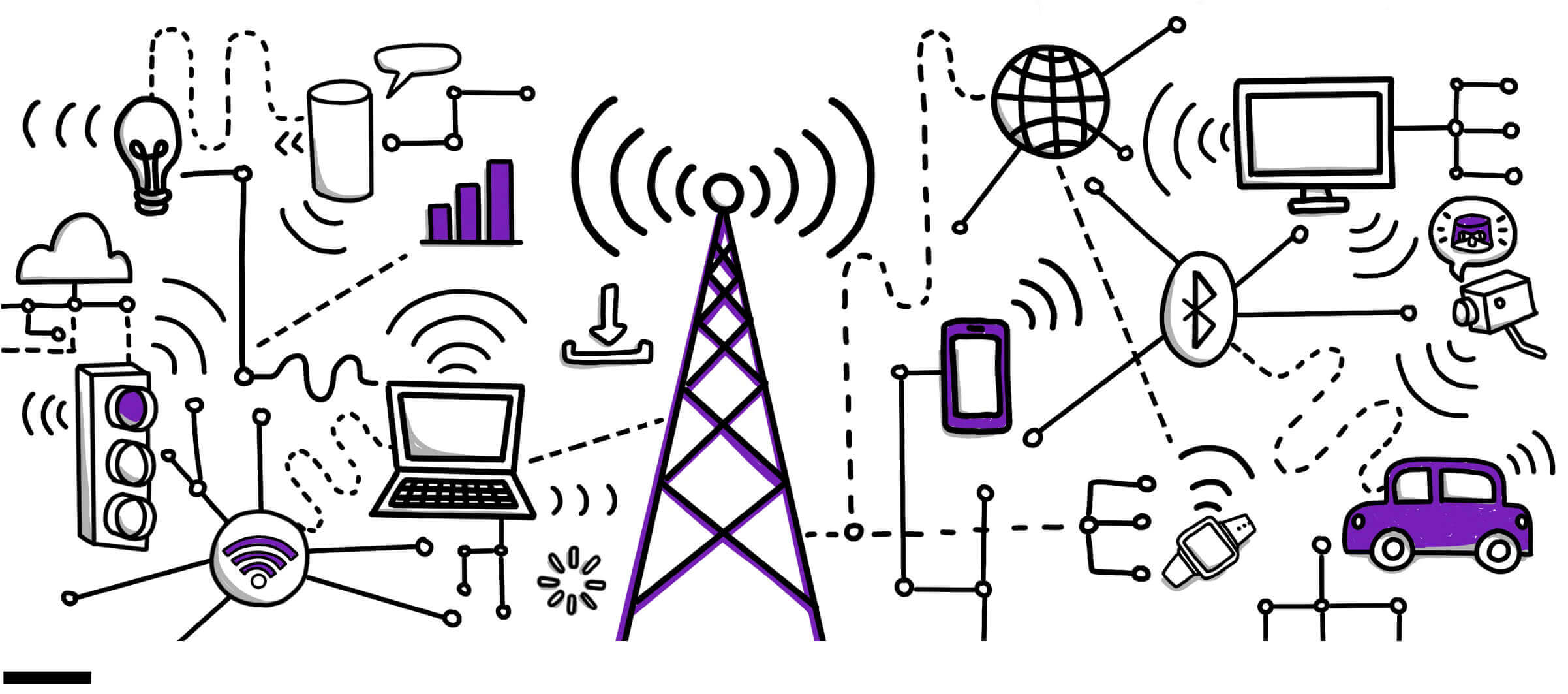The 5G Opportunity: Exponential Change On The Horizon

If you’ve been doing your homework, chances are you’ve read the same thought leadership about 5G that we have…it usually goes something like this:
On the drive home from work, you shop for a new couch on your phone. You project various options into a 3D visualization of your living room, narrowing them down to a sleek grey loveseat and a plush red suede sectional. You pull the trigger on the sofa order — settling on comfort over the style — just as the car turns into your driveway. Using its 5G transmitter to send a real-time image of your home to the cloud, it validates it’s in your driveway and puts itself in park. You open the front door, and stumble over dinner: a boxed meal-kit, which was delivered to its own exact spot earlier by drone. You’re starving — a meeting ran late at work — which your health tracker recognizes (via your low glucose levels) and communicates to your AI home assistant: after a quick confirmation, it preheats the oven to 325 degrees and readies a cooking instructional video on the screen in the kitchen. Time to cook.

5G is fast approaching, which means the above low-key slice of sci-fi could soon be a reality. With a theoretical maximum speed of 20 gigabits per second (!), 5G is understood to be exponentially faster than the current networks we use today (including Google fiber, which offers up to one gigabit per second). This means a significant boost in speed, and downloads that currently take minutes will be done in seconds.
But a 5G future is about more than just speed. It is also about the advancements the boost in speed makes possible. For brands, the opportunities are dizzying and marketers have already started paying attention. With towers eventually being able to support up to a million devices per square mile, at a minimum this seamless transfer of large amounts of data would facilitate the creation of a range of immersive, cinematic, and hyper-personalized experiences for customers like no one has ever seen—exactly what marketers have been dreaming and talking about for years.
In short, 5G has the potential to change the way we interact with one another, and the world at large. But as amazing as that world sounds (we’re excited too) this isn’t that kind of article.
5G is fast. But not so fast.
Much of the hyped-up coverage of 5G minimizes or completely overlooks two important factors: rollout and adoption. Mainstream adoption is still years away. In most advanced countries, 5G networks aren’t slated to be available at scale until 2020. Suppliers have, and will continue to, take the proper time to build out infrastructure, starting with select cities. Even once the networks are in place, consumers will still have to buy new 5G devices (there currently aren’t any on the market, although Sprint and LG both say they’re building a 5G smartphone), and sign up for new (likely pricy) contracts to access them. And there’s no guarantee manufacturers and developers of consumer products will create enough value at 5G’s outset to convince people they need to make the switch right away.
But for business to business leaders and masters of industry of every size, now is the time to examine your 5G strategy.
While mass consumer adoption of 5G might take some encouragement, the business applications of 5G are vast and could be more immediate. Through its ability to facilitate the speedy collection, analysis, and targeted deployment of vast amounts of data, 5G is poised to help early adopters radically disrupt entire industries. It can fundamentally reshape how companies operate, in large part by accelerating all aspects of business powered by data. Here are a few areas that will receive a shot of B-12 from 5G — as well as the questions they raise for brands.
New Products. Thanks to technologies like VR (virtual reality) and AR (augmented reality), 5G is poised to introduce new kinds of immersive experiences. Medical devices are a clear application that could revolutionize how patients are cared for, from pre-operative preparation, to assisted surgeries, to post-operative support. What visual, cinematic, and experiential data would your partners, employees, and consumers benefit from every day?
New Business Models. The internet used to be a thing and now it runs through everything. Once 5G hits, a much, much faster version of the internet will flow through connected devices, enabling them to collect, transmit, and share information in near real-time. John Deere, for example, who is already helping farmers use data could supercharge its equipment to help increase crop yields by having the machines collect and analyze more data in real-time such as soil conditions, temperature, and precipitation and visual appearance.
How could you use rich data in unlikely places to create better products and services for your employees and customers?
Service and Customer Care. Reliable 5G networks will allow for machines of every ilk to be aware, cognizant of, and capable of adapting to their environment. Today, Schindler, the global manufacturer of elevators and escalators, services mechanical errors as they happen. However well they are minimized, this leads to disruptions.
By allowing the company to monitor performance on a real-time basis, 5G could be used to detect and fix maintenance issues before a breakdown. Are you going to buy this capability from providers or build it from within?
Smart Spaces and Places. Thanks to next-generation network connectivity, smart offices, spaces, and even cities will be able to help authorities and planners use resources wisely and make the most of boots and machines on the ground.
How can you optimize your office to be symbiotic with the needs of your employees?
Communication. At its core, 5G is a mobile network that will facilitate the speedy transfer of information.
How does your business communicate internally and with partners today? How can improved communication with your ecosystem transform your market proposition?
This is far from an exhaustive list of what 5G could make possible in your specific industry. Big picture, the rollout will make the exchange of data more autonomous, virtual, and trackable in real-time. As such, your business has the opportunity to become more deeply connected to customers, ecosystem partners, and its broader field of interactions.
The time for planning is now. Ready or not, 5G is coming. Take note of where it’s being rolled out, and when. It just might be in your backyard.
Which companies will lead the way, building new business models to capitalize on these possibilities? Which of your competitors will be first to market with digital transformation that is finally worth the amount of articles and white papers written on the subject?
It could be you.
The future of 5G in B2B belongs to those who prepare for it today.
***
Roland Bernhard is a Senior Partner based in Vivaldi’s Zurich office, connect with him via email here.
Tom Ajello is Vivaldi’s Global Chief Creative Officer based in our New York office, connect with him via email here.